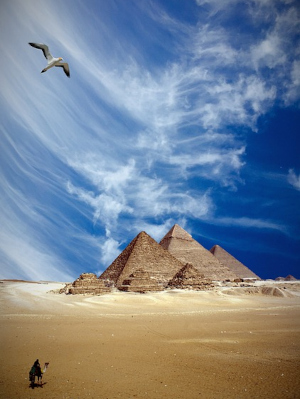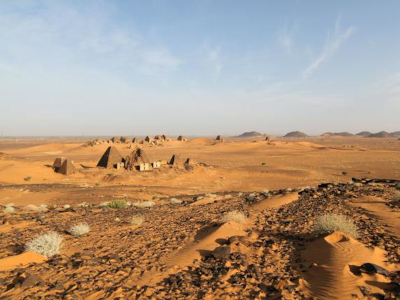Sudan was once home to the Kingdom of Kush, a rival to Egypt that embraced its neighbor’s culture and beliefs. The city of Meroë became its capital, where over 30 kings were buried among 200 pyramids. In comparison, there are only 118 pyramids in Egypt. The story of its rise and fall, its slender pyramids, and its ambitious rulers is a captivating tale that began over 5000 years ago.
During a span of 200 years, around 3000 BCE, Egyptian pharaohs sent their army south along the Nile in search of gold, granite for statues, ostrich feathers, and slaves. They constructed forts and later temples to assert their dominance over the Nubians. The Nubians, who were the early inhabitants of the central Nile valley, present-day northern Sudan, and southern Egypt, are believed to be one of the earliest cradles of civilization.

The conquered region became known as the Kingdom of Kush, with the Kushites fully adopting Egyptian culture, from gods to glyphs. They embraced it so completely that when the Egyptian empire collapsed in 1070 BCE, the Nubian dynasty, led by Alara, the King of Kush, spearheaded a revival of Egyptian culture, including the construction of their own pyramids.
After the Nubian dynasty thrived both militarily and economically, they believed themselves to be the true descendants of the Egyptian god Amun. As a result, they launched invasions of their neighboring regions to the north. Piye, the grandson of Alara, took charge and entered Egypt with the intention of reconstructing the grand temples. His influence extended throughout the entire Nile Valley, from Libya to Palestine and even as far as modern-day Khartoum. Piye was then crowned as the first pharaoh of Egypt’s 25th dynasty, leading the country for almost a century. This era saw the rise of the ‘Black Pharaohs’.
Piye’s reign lasted for 35 years until his death in 715 BCE. Despite conquering Egypt, he desired to be buried in the Egyptian tradition, a wish that was granted by his subjects. Piye was laid to rest in a pyramid, marking the first time in over 500 years that a pharaoh was buried in this manner.

The 25th dynasty and the Black Pharaohs faced a tumultuous end when Egypt was invaded by the Assyrians. This invasion resulted in the downfall of the dynasty, with the victors erasing their names from monuments and destroying their statues and memorials in an attempt to erase their legacy from history.
Following their loss of power, the Nubian pharaohs retreated to the city of Meroë, which became the new capital. Situated along the Nile, Meroë held a strategic position at the intersection of African trade routes and caravan trails from the Red Sea. Additionally, the city was rich in natural resources, particularly iron and gold mines, which facilitated the growth of a thriving metals industry, particularly in goldwork. Meroë became the final resting place for the royal pharaohs of Kush.

Meroë allowed the Kushites to maintain their independence and develop their own unique blend of Egyptian culture and religion until the fourth century CE. In their capital, the Meroites constructed temples, palaces, and royal baths, but their most impressive accomplishments were the 200 tall and slender pyramids at the necropolis in Meroë. These pyramids outnumbered Egypt’s pyramids, with a total of 255 compared to Egypt’s 118. Among the notable tombs in Meroë are the final resting places of 30 kings, eight queens, and three princes.
Sources:
https://theafricaninsider.com/sudan-has-twice-as-many-pyramids-as-egypt-this-is-their-little-told-story/
https://www.nationalgeographic.com/history/article/sudan-archaeology-pyramdis-kush-nubia
